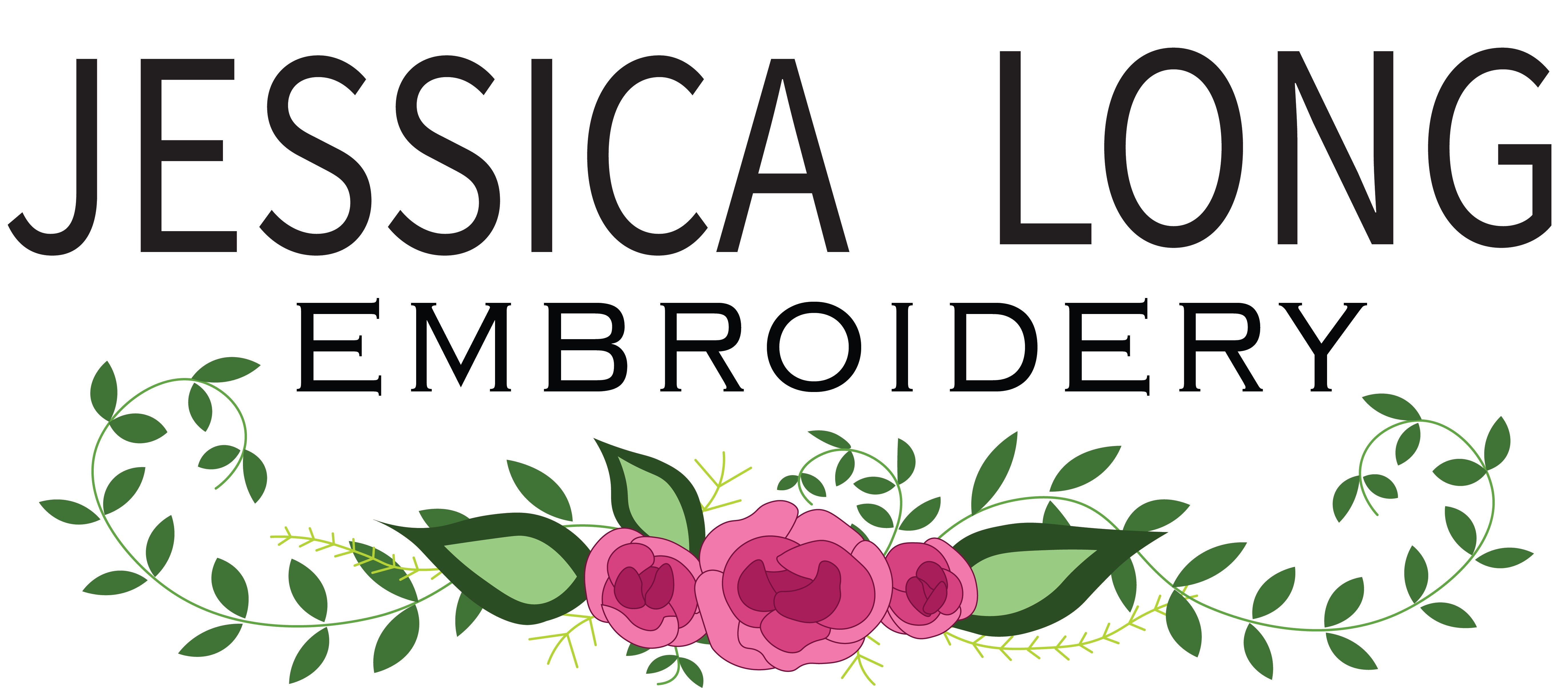Types of Needles for Hand Embroidery
When starting out in hand embroidery, it can be overwhelming to choose from all the different types and sizes of needles available. This guide will break down the main needle options and their uses to help you pick the best needles for your embroidery projects.
Needle Characteristics
Needle Point
Needles can have sharp or blunt tips. For hand embroidery it helps to use a needle with a sharp tip that can easily pierce through fabric and split through stitches. It can be useful (but not necessary) to switch to a needle with a blunt tip when creating weaving stitches, such as woven wheel roses, where we do not want to pierce the fabric.
Needle Eye
The eye of a needle can vary in size and shape. Be sure to use needles with a large enough eye to easily pass your thread through. Use larger eyed needles for thicker threads, and smaller eyed needles when using thin, single plies of thread. Some needles, like Milliners', have eyes that do not bulge beyond the thickness of the needle. These types of needles can be useful for creating stitches like French knots and bullion stitches.
Needle Length
Hand sewing needles come in a variety of lengths. Some stitches, like long and short stitch, can be easier with a shorter needle. Other stitches, such as cast-on stitch and chain stitch, can be easier for some stitchers while using a longer needle.
Needle Diameter
Generally, the thickness of a needle will be related to the size of the eye. A larger eye will result in a needle with a larger diameter. Using the smallest needle that you can comfortably thread will reduce the size of the holes created in your fabric with each stitch.
Specific Needle Types
- Embroidery (Crewel) Needles: These are the most common needles used for hand embroidery and are characterized by a sharp point and a large, oval eye. They are usually available in sizes 1 through 10, with size 1 being the largest. The sizes vary in eye size, needle length and needle thickness. The majority of hand embroidery work using six-stranded embroidery thread can be completed using these needles.
- Milliners' (Straw) Needles: These needles have sharp tips and oval eyes that are in line with the needle shafts. As a result, the needle eyes will not get stuck in knotting stitches, making stitches such as boullions easier to complete. They are also great for beading.
- Tapestry needles: These needles have blunt tips and very large eyes. They are great when working with canvas or loose even weave fabrics (such as Aida) so are usually used for counted cross stitch.
- Chenille needles: These needles are similar to tapestry needles but they have sharp tips. Some people like using these for hand embroidery work as the eyes are very large, making it easier to thread thicker fibers such as wool or even ribbon.
- Darners and Long Darners: These needles have sharp tips and can be very long. They can be useful
- Sharps, Quilting Needles and Between: These needles are short and skinny, and have very tiny, round eyes. They can be used for hand embroidery but I usually avoid these needles as they are difficult to thread.
Consider your fabric, thread and stitching style when selecting needles. With practice you'll learn which types and sizes work best for different techniques. There are dozens of needles to choose from and there may be multiple types and sizes that will work for your project!
Find an assortment of hand embroidery needles for sale here: Hand Embroidery Needles
